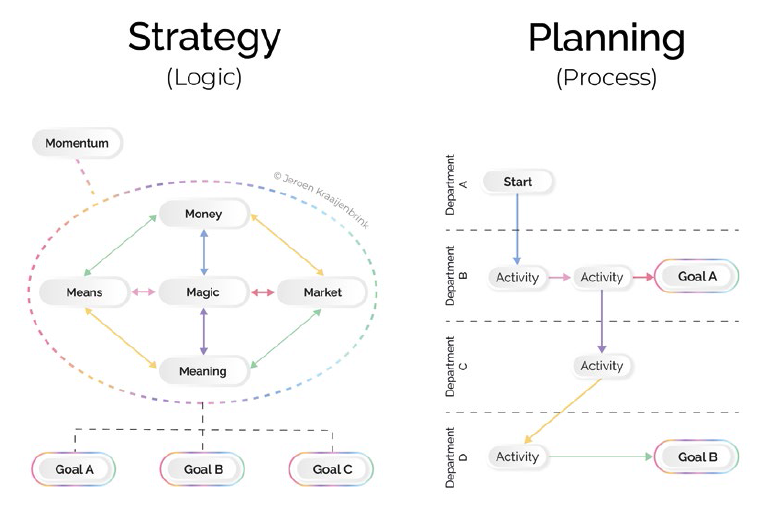Why a Plan Is NOT a Strategy

Image Source – Freepik
Planning and strategy are often confused with one another. They are even combined in the term “strategic planning.” But a strategy is something very different than a plan. When the distinctions are blurred, problems arise—as evidenced by the consistently high failure rates in strategy.
The confusion about what strategy is stems largely from the widespread and inaccurate use of the word itself. People tend to use “strategy” to distinguish a concept from something ordinary, like in “strategic HR” and “strategic marketing.” They also use it in their day-to-day language to reflect their ideas about how to achieve some goal. For example, “My strategy to lose weight is to eat 10% less than usual every day.”
Read More >> A Strategic Lexicon: Comparing Key Concepts
In business, or organizations more generally, strategy means something else. It must be because otherwise, every plan, approach, and process can be called a strategy, which brings us nowhere. This is how a strategy and a plan are different (see Figure 1).

Figure 1. The Differences Between Strategy and Planning
- A strategy is a logic that describes how an organization creates and captures value. It is the starting point from which goals can be derived.
- A plan is a process that describes the steps an organization intends to take in order to achieve its goals and thereby realize its strategy.
Since plans and planning are widely known, it is important to zoom in on the strategy part of this comparison. A strategy lays out the logic according to which an organization creates and captures value. As described in my recent book, “The One-Hour Strategy,” this covers six elements that comprise the 6M Framework:
- Magic: The products and services the entity offers and what they do for customers
- Market: The customers whose needs the business serves and the alternatives it competes against
- Means: The assets and capabilities that a company and its partners can bring to the table
- Money: The way and amount of revenue generated versus existing costs and risks
- Meaning: The things that the company finds most important and to which it most aspires
- Momentum: The factors outside one’s control that help or hinder them in what they do
This is not just a list. There is a logic reflected in the image. The heart of a strategy is the company’s Magic (the value it creates). It is a link between the Means (how one does this) and the Market (where and for whom one does it).
It is also the link between Money (how value is captured) and Meaning (the why). And around that, there is Momentum (the environment), which either works for a company or against it.
Read More >> Democratizing Strategy Planning to Improve Employee Engagement
Finally, as reflected by the other arrows, a good strategy is an integrated set of choices that all align so that all 6 Ms fit together as one coherent whole.
Seen as such, there is no need to confuse a strategy and a plan. The two are simply very different.
**********
About the Guest Expert: Jeroen Kraaijenbrink is an accomplished strategy educator, mentor, author, and consultant with over two decades of academic and industry experience. He has a PhD in industrial management and has helped improve the strategic planning and implementation of numerous organizations across a variety of industries.
Editor’s Note: This was originally published in Performance Magazine Issue No. 29, 2024 – Strategy Management Edition.

